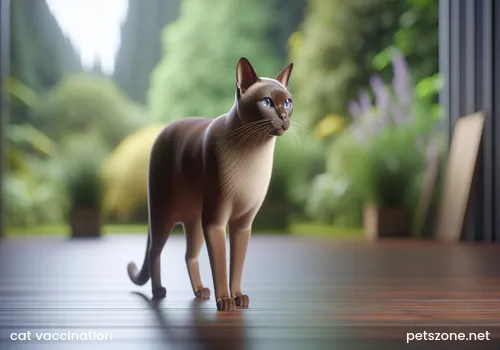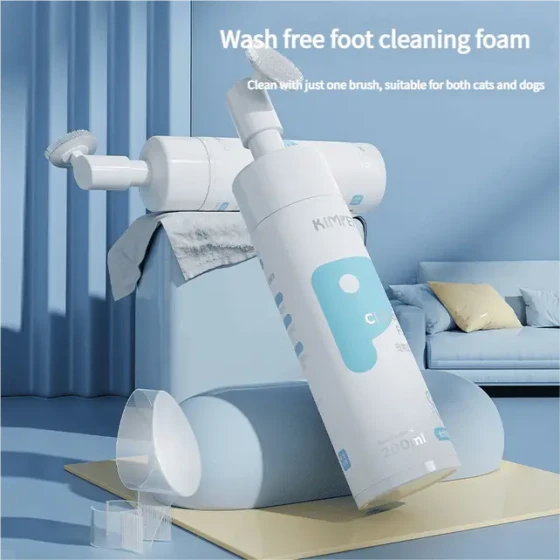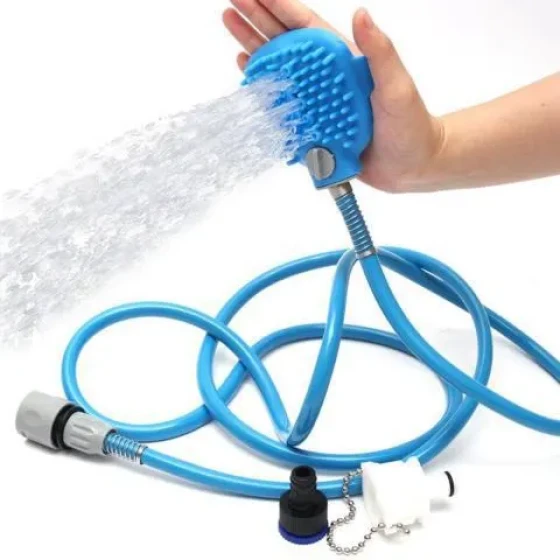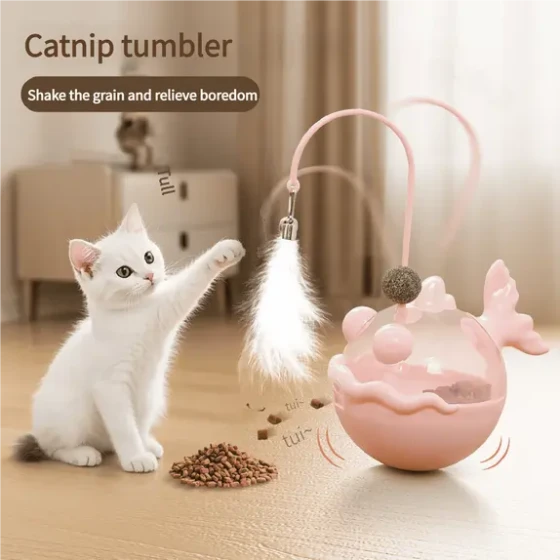When Do Cats Get Vaccinated_Kitten Immunization Schedule
Raising cats, especially kittens, vaccination is definitely an unavoidable “required course.” Simply put, kittens usually start their initial core vaccine around 8 weeks of age, followed by multiple boosters every 3-4 weeks until 16 weeks or older to ensure immunity. Adult cats need to get boosters regularly (usually annually or every three years) according to the veterinarian's advice.
This matter seems as simple as just getting a few shots, but there is quite a bit of “science” and “art” behind it. As a responsible “cat owner,” understanding the cat’s immune principles and vaccination schedule is like understanding why your “master” always likes to dance on your keyboard; although it won’t solve the fundamental problem (cats liking keyboards might be unsolvable), it can help you better comprehend the logic behind their behavior and how to better protect them.

Why do kittens need to “get a few shots”?
Newborn kittens come with a “halo” — maternal antibodies from the cat mother’s colostrum. These act like a temporary “shield” that helps them resist some early viruses while their immune system is not fully developed. However, this “shield” is not permanently effective; its protective effect gradually weakens and usually disappears within a few weeks to months. Interestingly, these maternal antibodies sometimes interfere with vaccine effectiveness, causing the vaccine to “fail.”
This is like trying to teach a child new knowledge, but they are clutching the old textbook tightly, making it hard for the new knowledge to fully get in. Hence, the timing of vaccination becomes very delicate: it must wait until maternal antibodies drop to a level that does not interfere with the vaccine, yet before the “shield” completely disappears and the kitten is exposed to risk, to timely build its own immune defense. This is the art of the “window period,” and multiple vaccinations aim to capture this window as much as possible to ensure the vaccine successfully stimulates the kitten’s immune system to produce long-lasting antibodies.
Kitten’s “immune checkpoint” schedule
Now, some more specific “operating instructions.” According to internationally accepted recommendations, the core vaccines (key point, this is the basic protection) for kittens usually start at 6-8 weeks of age. The mentioned core vaccines mainly target diseases that are widespread, highly fatal, and life-threatening, such as feline panleukopenia (feline distemper), feline herpesvirus (causing feline viral rhinotracheitis), and feline calicivirus infection (also a common upper respiratory pathogen). These three diseases are often combined, known as the “feline triple vaccine.”
After this initial vaccination, it’s not yet completely safe. Like leveling up in a game, kittens need booster shots in the following weeks. Generally, a booster is given every 3-4 weeks until the kitten is 16 weeks or older. Some suggestions even recommend kittens in high-risk environments (such as catteries, strays, or multi-cat households) begin vaccinations as early as 4 weeks, but the last core vaccine must be completed at 16 weeks or later to overcome maternal antibody interference. This ensures that after maternal antibodies fully wane, the vaccine effectively stimulates the immune system to establish strong protection. If resources are limited, at least one core vaccine should be given at 16 weeks or older.
Besides the basic “feline triple” vaccine, the rabies vaccine is also one of the core vaccines, especially in rabies-endemic areas, where many places legally require cats to be vaccinated. It is usually recommended to vaccinate kittens at 12-16 weeks of age with the rabies vaccine, followed by boosters as required.
For cats with special lifestyles, some may need non-core vaccines. For example, cats that often go outside, live in multi-cat households, or might contact other cats (even indoor cats, as owners may bring pathogens back), vets may recommend the feline leukemia virus (FeLV) vaccine. FeLV is a virus transmitted by direct contact and is especially dangerous to kittens; some guidelines even classify the FeLV vaccine as core for kittens under 1 year old. However, FeLV vaccination is generally recommended after virus testing before administration. Other non-core vaccines may include chlamydia, bordetella, among others, depending on the cat’s specific conditions and risks, requiring detailed consultation with a veterinarian.
Adult cat “maintenance” plan
After completing the basic kitten immunization, the protection is not lifelong. Like a phone needing recharging, a cat’s immune system also requires “maintenance.” Adult cats need regular booster vaccinations.
For core vaccines, annual booster vaccinations were commonly recommended for many years. However, recent research has led some international veterinary organizations (such as WSAVA) to suggest that after completing the kitten’s initial series and 6- or 12-month boosters, subsequent boosters for some core vaccines (like panleukopenia, herpesvirus, calicivirus) may be given every three years, as their protection can last many years or even lifelong. Rabies vaccine booster frequency may vary by country or region according to regulations, possibly annually or every three years.
As for non-core vaccines, like the FeLV vaccine, because of its shorter protection period (usually about one year), annual boosters may be required, especially for cats continuously exposed to high-risk environments.
Vaccination is not “mysticism,” it requires care
Vaccination is not completely risk-free, although adverse reactions are very rare and usually mild (such as slight swelling at the injection site, lethargy, decreased appetite), there is a very low risk of severe allergic reactions and potential vaccine-associated sarcoma (especially with adjuvanted vaccines). Therefore, choosing non-adjuvanted vaccines and paying attention to injection site (for example, recommended injection at the distal limbs) can minimize risk.
After vaccination, careful observation of the cat’s condition is important. According to some advice, if the swelling at the injection site lasts more than three months, is larger than 2 cm, or continues to grow within a month after vaccination, medical checkup should be promptly sought, following the so-called “3-2-1 rule.”
Furthermore, cats must be healthy when vaccinated. If a cat is ill, weak, feverish, or undergoing immunosuppressive treatment (such as long-term corticosteroids), vaccination should usually be postponed until the condition improves or under veterinary guidance.
Finally, and most importantly: all these “schedules” and “recommendations” are only general guidelines. Every cat is a unique individual, with differing living environments, age, health status, and exposure risks. The most reliable approach is to take your cat to a trusted veterinarian, discuss its specific situation in detail, and have the vet customize the most suitable vaccination plan. The veterinarian is the real “master” combining professional knowledge and clinical experience to safeguard your cat’s health.
Don't treat vaccination as just applying a “buff” to your cat; it is a continuous process requiring scientific planning and execution. This is not only to protect your own cat but also for the health of the entire cat community, as many infectious diseases do not discriminate. As the old saying goes, “prevention is better than cure,” locking the “immunity gate” securely before diseases knock is always the right choice.



